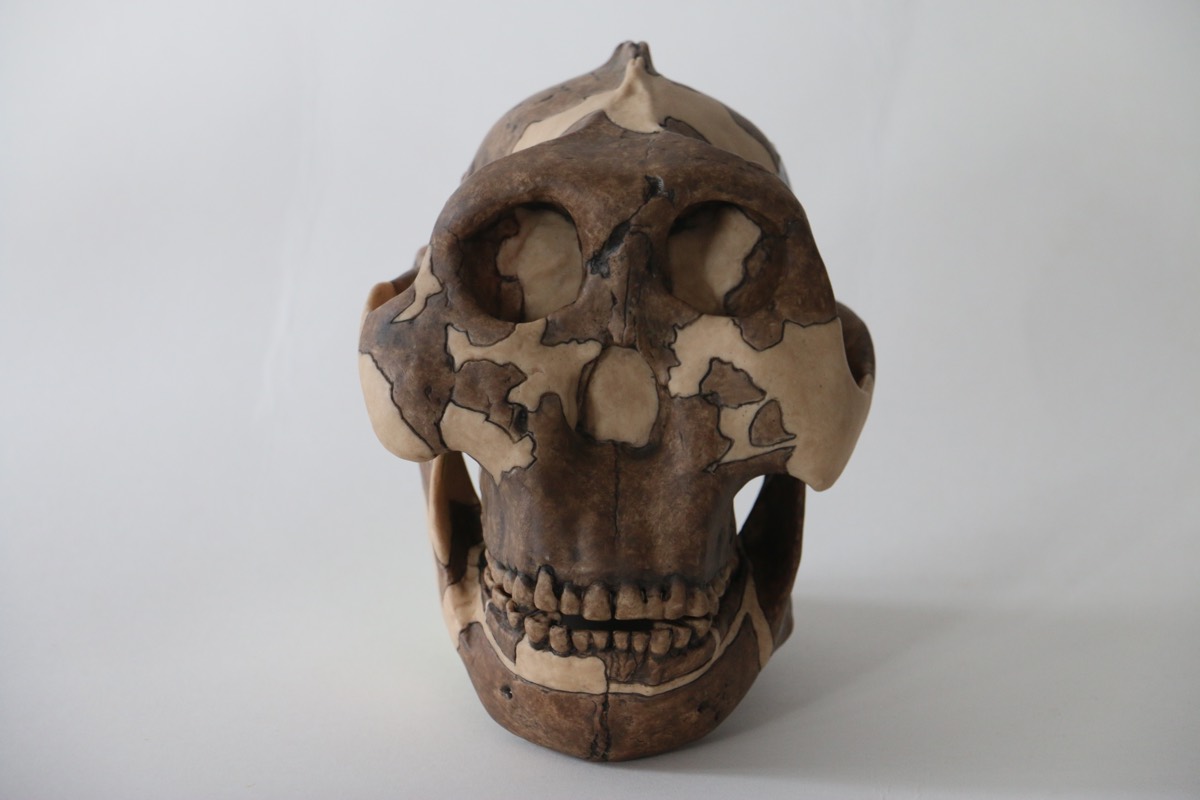Did 'Nutcracker Man' Give Us Genital Herpes?

The ancestors of modern humans may have gotten genital herpes from the now-extinct relative of humanity commonly known as Nutcracker Man, a new study suggests.
Analyzing the DNA of the viruses, bacteria and other life-forms that can infest people reveals not only the origins of human disease but also valuable hints about the lifestyles of past humans and their ancestors. For example, a 2007 study revealed that humans caught pubic lice, aka "crabs," from gorillas about 3 million years ago, while a 2011 study suggested that Christopher Columbus and his crew brought syphilis with them from the New World to the Old World.
"We can use data from diseases to reconstruct events that are completely invisible to the archaeological and fossil records," study senior author Charlotte Houldcroft, a virologist at the University of Cambridge in England, told Live Science. [Photos: The Life of Nutcracker Man]
Tracing HSV1 and HSV2
Houldcroft and her colleagues analyzed two related viruses. In modern humans, herpes simplex virus 1 (HSV1) results in cold sores, while herpes simplex virus 2 (HSV2) results in genital herpes.
A 2014 study suggested that HSV1 has infected the human family tree, known as the hominins, since at least the split from the precursors of chimpanzees about 6 million to 7 million years ago. That research estimated how long hominins possessed HSV1 by comparing modern human variants of the virus with ones found in chimps. DNA accumulates mutations over time at a relatively constant rate, and by analyzing the level of genetic differences between these viruses, scientists could estimate about when they diverged.
That 2014 study suggested that, in contrast to HSV1, HSV2 didn't begin infecting the ancestors of modern humans until sometime between 3 million and 1.4 million years ago. As such, HSV2 must have come from another species, since hominins had already split off from chimpanzee predecessors.
"Herpes [viruses] infect everything from humans to coral, with each species having its own specific set of viruses," Houldcraft said in a statement. "For these viruses to jump species barriers, they need a lucky genetic mutation combined with significant fluid exchange."
Get the world’s most fascinating discoveries delivered straight to your inbox.
How modern humans got genital herpes
The researchers thought the most likely route through which HSV2 invaded the ancestors of modern humans was from African apes through an unknown hominin species. They did not suggest that any hanky-panky helped HSV2 jump the species barrier — rather, the intermediate hominin species may have contracted HSV2 through scavenging ancestral chimp meat where the savanna met the forest, with the germs seeping into their bodies via bites or open sores. The ancestor of modern humans, Homo erectus, could then have contracted HSV2 either by scavenging off the intermediate hominin or, say, drinking next to it at a lake, Houldcroft and her colleagues said. [Image Gallery: Our Closest Human Ancestor]
While discussing genital herpes over dinner, the researchers suggested finding out which hominin species transmitted HSV2 to the ancestors of modern humans. Their strategy involved analyzing the locations where the ancestors of chimps might have overlapped with four different hominin species that lived in the past 3 million years: Australopithecus afarensis, Homo habilis, Homo rudolfensis and Paranthropus boisei.
First, the scientists reconstructed ancient African climates to deduce where tropical rainforests were located over the past 3 million years, since ancient chimps likely lived there. Next, they looked at where hominin fossils have been unearthed in Africa.
"Climate fluctuations over millennia caused forests and lakes to expand and contract," study lead author Simon Underdown, a paleoanthropologist at Oxford Brookes University in England, said in a statement. "Layering climate data with fossil locations helped us determine the species most likely to come into contact with ancestral chimpanzees in the forests, as well as other hominins at water sources."
The most likely culprit for spreading genital herpes to the ancestors of humans was the hominin Paranthropus boisei, which roamed across East Africa 1.4 million to 2.4 million years ago. This species earned the nickname "Nutcracker Man" because of its massive jaw and huge molars.
"Once HSV2 gains entry to a species, it stays, easily transferred from mother to baby, as well as through blood, saliva and sex," Houldcroft said in the statement. "The genital herpes virus would have crept across Africa the way it creeps down nerve endings in our sex organs — slowly but surely."
Houldcroft noted that hominin fossils discovered in the future could lead to other candidate sources of genital herpes. Still, "P. boisei is likely to remain a strong candidate," she said. "It is in the right part of Africa during the period of time when HSV2 is most likely to have jumped the species barrier, and it had the opportunity to overlap with human ancestor Homo erectus. Not all new fossil finds will fulfill these criteria as fully as P. boisei does."
Underdown, Houldcroft and their colleague Krishna Kumar, an engineer at the University of Cambridge, detailed their findings Oct. 1 in the journal Virus Evolution.
Original article on Live Science.



